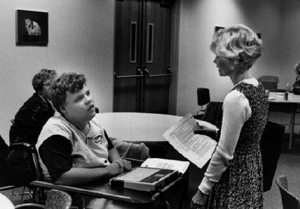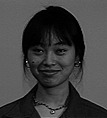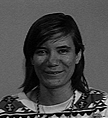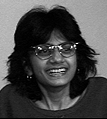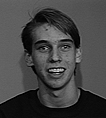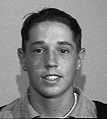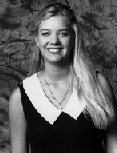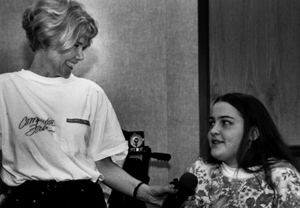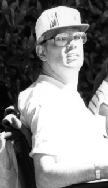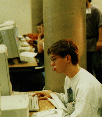Director's Digressions
For a college freshman, talking to a professor can be intimidating at first, but developing a positive student-professor relationship is especially important to the success of a student with a disability. In DO-IT activities students are encouraged to develop skills in communicating with college faculty.
First, we explain the nature of a faculty position. We compare the job of a college professor with that of a high school teacher. For example, for a high school teacher, instruction may comprise most of the time in their work schedule. However, many college faculty members spend a great deal of time conducting research and handling other non-teaching duties.
High school teachers usually spend longer periods of time with a student than college professors. For example, high school students might see their mathematics teacher every school day for a whole year; college students may see a specific mathematics professor in class only three times per week for ten weeks. This fact, coupled with some large college class sizes means that professors may not be able to get to know all of their students personally. Often, faculty become best acquainted with students who make a point of contacting them before or after class; therefore students have a strong influence on their relationships with professors.
Parents, counselors, and special education teachers often make sure that appropriate disability-related accommodations are made for a student before college. In college, it becomes the student's responsibility to request accommodations.
Together, these factors mean that college students with disabilities must take the initiative in order to assure that they will receive accommodations. The disabled student services office on campus is a good place to start, but developing a positive relationship with each faculty member is also important.
Potential college students should learn good communication techniques and then practice them! In some of our DO-IT activities students participate in role-playing exercises. One student plays a faculty member and one plays him or herself (not as easy as it sounds!). The scenario is that the student is meeting with the professor before taking the professor's class. Here are the instructions we give the students:
Introduce yourself and then:
1. explain that you have a disability and that you will need some accommodations in class. You should request a letter from the disabled student services office that will explain what accommodations are needed.
2. describe your disability in terms of functions that are relevant to the class. (Don't go into your whole life history here; focus on how your disability will affect you in the class.)
3. describe what types of academic accommodations have worked for you in the past and how they were helpful.
4. be specific about your requests. Don't assume that the professor knows about your type of disability or that they have ever had a student with a disability in their class.
All of this should be done in about five minutes. Here are a few short examples:
- I cannot use my hands because of quadriplegia. I use a portable computer, Morse code input with a sip and puff switch and Internet resources to help me complete my work independently. I would like to be able to use my portable computer to take notes in class and to complete exams. I would like to be able to use adapted lab equipment when possible and I may need a lab partner if there are some tasks I cannot perform."
- I have a learning disability which makes it difficult for me to read. I am a very slow reader. I limit the number of classes I register for and allow extra time to complete reading assignments. I would like to get the reading assignments as early as possible and I will also need extra time to complete written exams."
- I have been blind since birth. I cannot see the blackboard or other visuals shown in class, and would like you to explain what you are writing on the board as you are writing it. I cannot read printed text and I use special adaptive technology to access a computer. I have a computer with voice output and access to the Internet. I also have Braille translation software and an embosser for creating hard copy in Braille so that I can read and edit it. I have a standard printer for producing papers to turn in to you. I would prefer that you give me handouts, tests and other materials you create on disk or via electronic mail so that I can convert them to Braille or use voice output. Articles and texts need to be produced in Braille or on audio tape. These processes take time, so the earlier I can have the materials, the easier it will be for me to keep up."
Many students report positive responses from faculty when they take similar proactive approaches to seeking accommodations. Remember that most faculty are willing to provide accommodations if you are clear on what you need and how it can be provided. Also, you are the expert on your disability and your unique needs. Faculty need your help in determining appropriate accommodations. It's reassuring to know, however, that the disabled student services office is there to help you determine what an appropriate accommodation is and help you and the professor set up the accommodations. The DSS office can also intercede when a professor is resistant to providing an accommodation.
Attention Potential DO-IT Scholars!
We are actively recruiting high school sophomores with disabilities to participate in the DO-IT Scholars program. Candidates must be interested in science, engineering or mathematics and in going to college, and must live in the United States. DO-IT Scholars attend summer study sessions at the University of Washington, are loaned computer systems that they keep in their homes, and connect to the Internet. Most costs are covered by a grant from the National Science Foundation. Please encourage young people to apply. You can get details about the DO-IT Scholars program at our home page at www.washington.edu/doit Applications can be obtained from the DO-IT office. They are accepted on an on-going basis. Potential applicants are encouraged to submit their forms by the week of January 22 in order to be reviewed by the next meeting of the Advisory Board.
